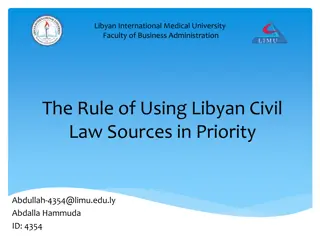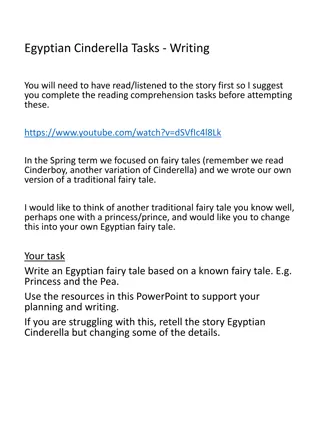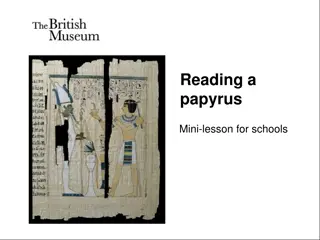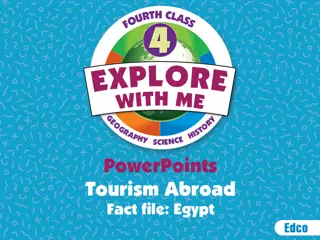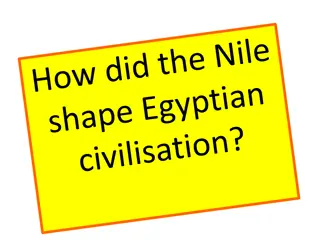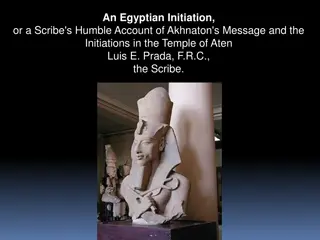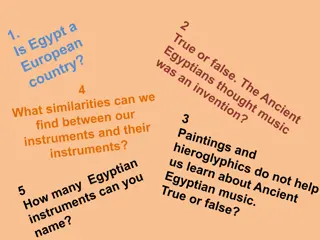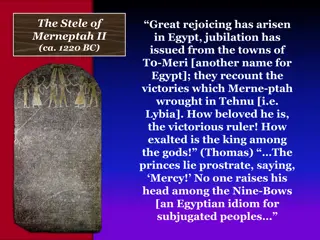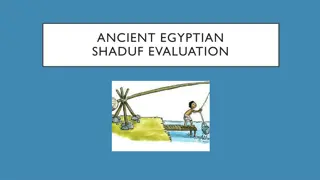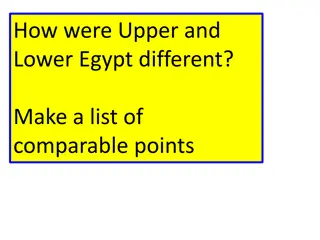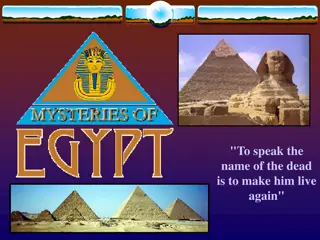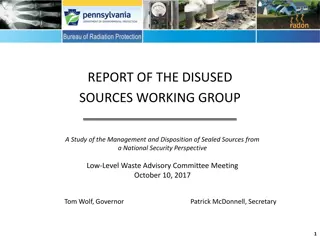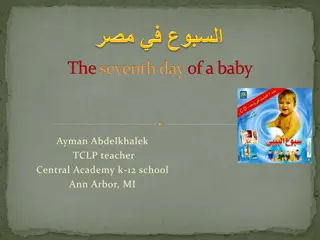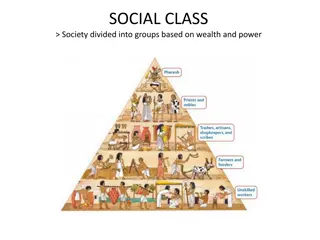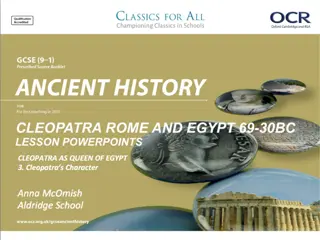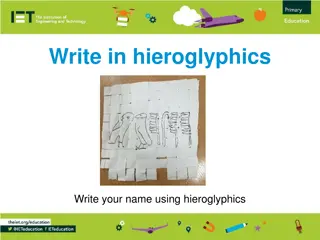
Unlocking Ancient Secrets: Rosetta Stone, Hieroglyphs, and Ancient Egypt
Explore the significance of the Rosetta Stone, the mystery of hieroglyphs, and the sources of information on Ancient Egypt. Learn how this ancient civilization's history was deciphered, uncovering a rich tapestry of knowledge and culture.
Download Presentation

Please find below an Image/Link to download the presentation.
The content on the website is provided AS IS for your information and personal use only. It may not be sold, licensed, or shared on other websites without obtaining consent from the author. If you encounter any issues during the download, it is possible that the publisher has removed the file from their server.
You are allowed to download the files provided on this website for personal or commercial use, subject to the condition that they are used lawfully. All files are the property of their respective owners.
The content on the website is provided AS IS for your information and personal use only. It may not be sold, licensed, or shared on other websites without obtaining consent from the author.
E N D
Presentation Transcript
Learning Objectives: 1. To learn about the Rosetta Stone 2. To learn about Hieroglyphs 3. To learn about other sources of information for Ancient Egypt
In the fifth century BC the Greek historian Herodotus, on a visit to Egypt, marveled at the number and size of the monuments, some of which were already 2000 years old, He said About Egypt I shall have a great deal more to relate because of the number of remarkable things which the country contains, and because of the fact that more monuments which beggar description are to be found there than anywhere else in the world. Visitors to Egypt today can still marvel at many of the sites Herodotus would have seen the pyramids, the massive stone statues, temples and tombs. With their painted hieroglyphic texts they provide a wealth of information on the ancient Egyptians. However, there are few reliable records of those events which affected Egyptian development and the lives of individual people. One Egyptologist, Gardiner, says that what is proudly advertised as Egyptian history is merely a collection of rags and tatters.
The written records left by the ancient Egyptians are to be found: Carved into walls of temples Inscribed onto stelae (stone pillars) found in tombs and temples and wherever Egyptians felt the need to commemorate a military victory, the founding of a new city, or a successful mining expedition Painted or inscribed onto coffins and sarcophagi Written on papyrus Written onto ostraca (broken pieces of pottery) None of these could be read before the nineteenth century and the discovery of the Rosetta Stone.
1.What is the Rosetta stone? 2.Why is it so important? 3.Who cracked the code and when did he do it? 4.What are hieroglyphs? 5.Why are hieroglyphs difficult to read? 6.What is a cartouche and why were they important in deciphering the Rosetta Stone?
1. Was was the purpose of Monumental inscriptions? 2. What information was included on them? 3. What were funerary texts used for? 4. Make a list of reasons the famous Egyptologist James said, the raw material for the writing of a satisfactory Egyptian history is insufficient and sketchy.
Learning Objectives: 1. To learn about the Rosetta Stone 2. To learn about Hieroglyphs 3. To learn about other sources of information for Ancient Egypt
Make a list of all reasons we know about the history ancient Egypt

